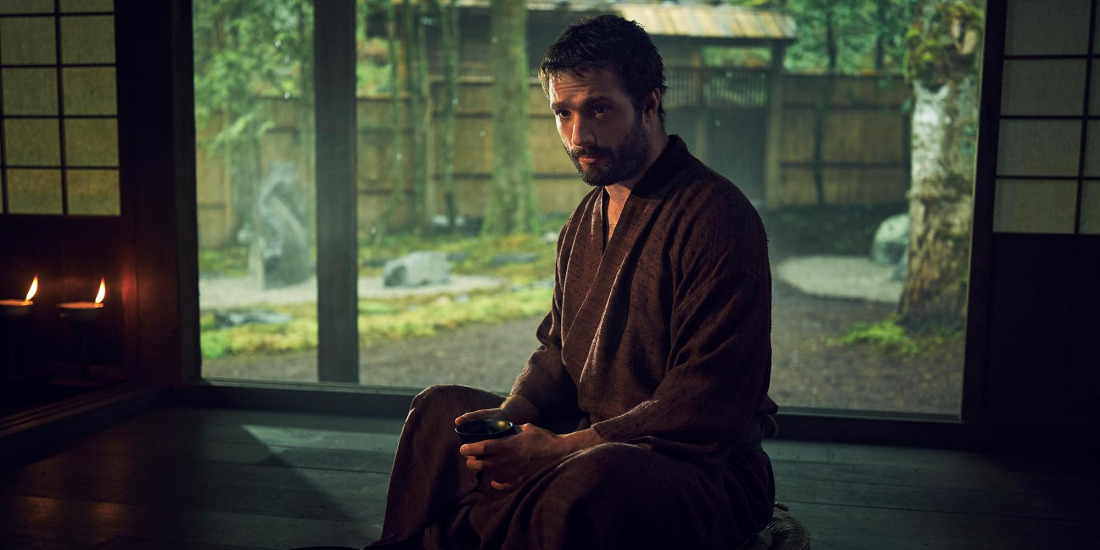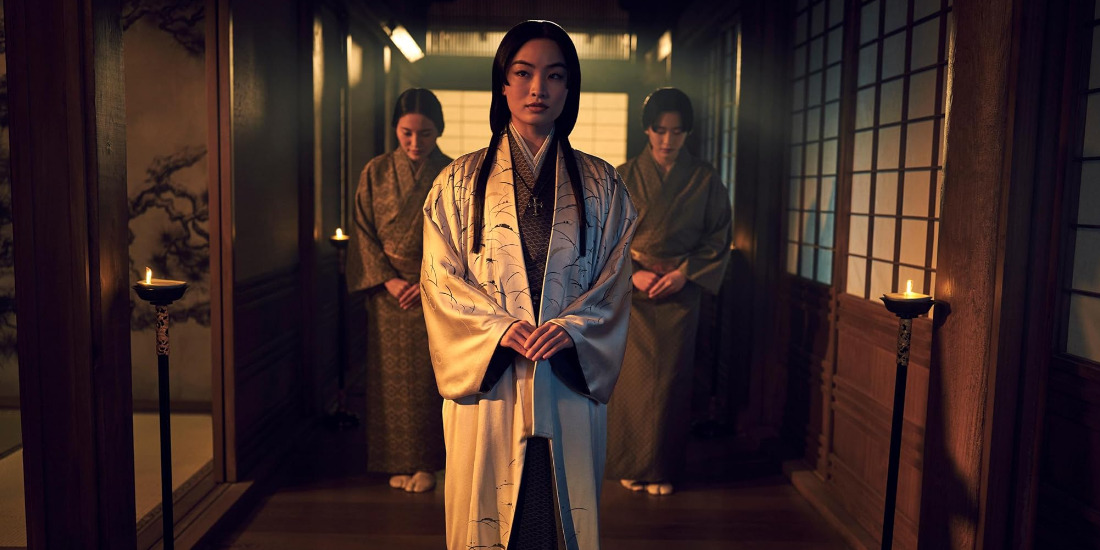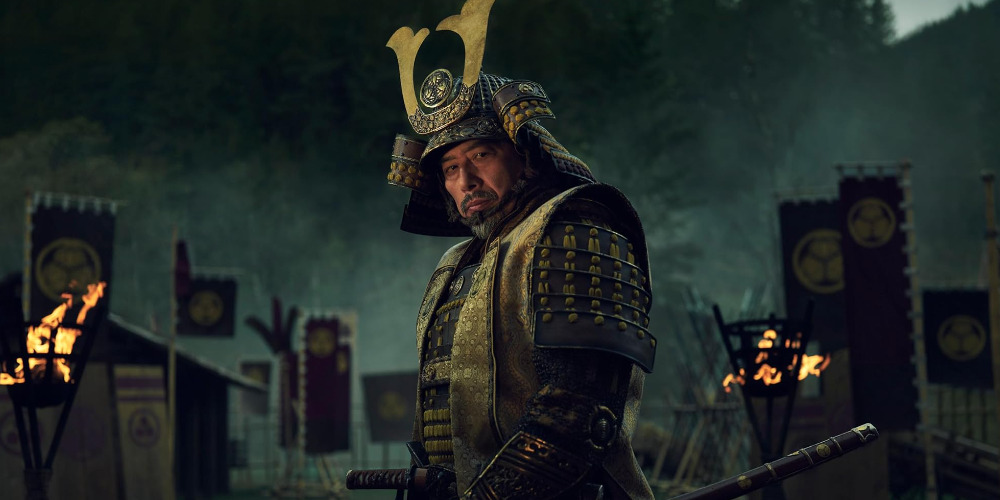The adventure drama show, ‘Shōgun,’ tells a story set in the 17th century about the Japanese military leader and his partnership with a marooned European navigator that changed the trajectory of the kingdom’s future. Shōgun Yoshii Toranaga resides in the middle of political unrest amidst a brewing civil war. However, the military man’s paths cross with John Blackthorne, a European sailor who can help Toranaga tip the scales in his favor. With plans to use Blackthorne as a pawn in the greater scheme of things, Toranaga employs the skills of Toda Mariko, a translator who becomes a bridge between the two men and faces her own complicated past in the process.
The FX series essays a rich world of engaging politics and fascinating history explored through the story of a Western individual whose fate becomes intertwined with the Eastern political leader. Thus, the show sports heavy historical connotations that may lead viewers to wonder about Blackthorne and Toranaga’s narratives and their roots in actual history.
Literary Roots in James Clavell’s Work
For the most part, ‘Shōgun’ is based on the eponymous historical fiction novel by James Clavell that came out in 1975. Reportedly, a passing line in a schoolbook belonging to the British author’s daughter, citing an Englishman who became a Samurai after his travel to Japan in the 1600s, inspired Clavell to craft his story. Although a single sentence incited the creation of Clavell’s work, the author went on to infuse extensive research into his novel to create a story that remains, at its core, a blend of fact and fiction.

Decades later, it seems fitting that the author’s daughter, Michaela Clavell, went on to become an executive producer to bring her father’s classic story to a modern audience. The work previously inspired another adaptation, an identically titled TV mini-series from the 1980s. However, FX’s adaptation sets itself apart and brings something fresh to the table through its new but equally authentic spin on Clavell’s writing.
“It’s a process of taking out what you want,” Michaela Clavell told The Direct in a conversation about the show. “You need to pick pieces and focuses from the book that big— you can’t show it all even in 10 hours.” As such, in the process of ‘Shōgun’s’ modern adaptation, the creatives behind the project highlighted the cultural aspect of Clavell’s work in an unprecedented manner.
“It [‘Shōgun,’ the FX show] is very much inclusive of the Japanese point of view. It is as much Toranaga’s story— as much as it is and maybe even more, John Blackthorne’s,” Michaela Clavell said in an interview with ScreenRant. “So it is a very different and worthy perspective.”
Shōgun: Modeled after Real Historical Figures
Although ‘Shōgun’s’ basis in a historical fiction novel paves the way for the show’s fictionality, it also strengthens its roots in reality. James Clavell partially based his book on the real-life story of William Adams, a European ship pilot who became a Samurai under Shogun Tokugawa Ieyasu’s employment. As a result, Adams and John Blackthorne, his literary— and eventual on-screen— equivalent, end up sharing many similarities. Likewise, Tokugawa remains a model for Yoshii Toranaga, with the two characters’ dynamic mining of noticeable historical inspiration from their real-life counterparts.

According to reports, Adams sailed with a Dutch fleet in 1598 and became stranded in Japan following a typhoon. However, the sailor, with knowledge of shipbuilding, astronomy, and navigation, caught the attention of Shogun Tokugawa, who ended up appointing him as an advisor. The man helped Tokugawa in his quest to maintain diplomatic relations with Europe— a feat that, according to Ian Bottomley, a Royal Armouries’ senior curator, put Japan on the diplomatic map.
Adams even earned the samurai title alongside a Japanese name, Miura Anjin, and went on to establish a second marriage in Japan to a Japanese official’s daughter. Due to his high value to Tokugawa, Adams wasn’t allowed to leave the country. As a result, the man lived in Japan for the following decades, failing to reunite with his wife until his eventual death.
Bottomley spoke about the dynamic and historical significance of Adams and Tokugawa, in contrast to Blackthorne and Toranaga, and said, “What [James] Clavell was writing was fiction. He changed names so he could play with history, but he didn’t modify it much. He just didn’t use the names Ieyasu or Will Adams.”
Similarly, Hiroyuki Sanada, who embodies Toranaga in the show, also discussed the connection between his character and reality, and said, “For me, playing Toranaga is very important, especially for now. Toranaga’s model, the real Shogun Tokugawa Ieyasu, stopped the war period and created the peaceful era for about 260 years. So, I thought we needed that kind of hero, especially for now. A meaningful role for now, for me.”
Thus, even though Clavell and FX’s rendition of his work employs their own artistic license in telling a fictionalized story, their narratives remain based on real lives. In fact, Toda Mariko, another crucial player in ‘Shōgun,’ also finds some roots in a real-life individual, even if one without any connections to Adams or Tokugawa. Although the character’s involvement in Japan’s 17th-century politics is largely fictionalized, one can trace her back to the real-life Hosokawa Gracia, daughter of Akechi Mitsuhide, a known Samurai.
Thus, ‘Shōgun’ becomes a culmination of various histories, brought together to create one singular narrative about 17th-century Feudal Japan. Since the show isn’t an outright biographical retelling of a historical narrative, the creators had to pay extra attention to ensuring authenticity within their story. For the same reason, several experts and scholars were consulted to maintain a sense of realism in details such as language, mannerisms, and culture.
Ultimately, Clavell’s work, already carrying a connection to reality through historical figures of Adams and Tokugawa, forms the building blocks of ‘Shōgun’s’ basis in reality. Furthermore, the show’s decision to highlight the perspective of characters like Toranaga and Mariko enhances the cultural authenticity of the tale by providing a nuanced overall narrative. As a result— since the historical drama doesn’t shy away from substantial creative liberties— it remains an authentic, yet fictionalized story inspired by reality.
Read More: Best Historical Movies on Netflix

